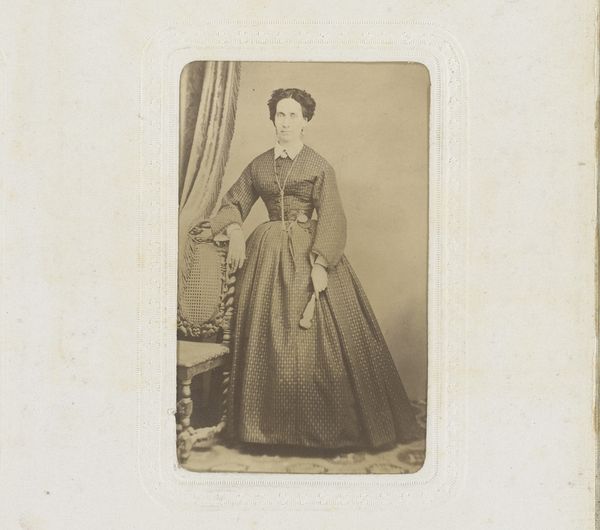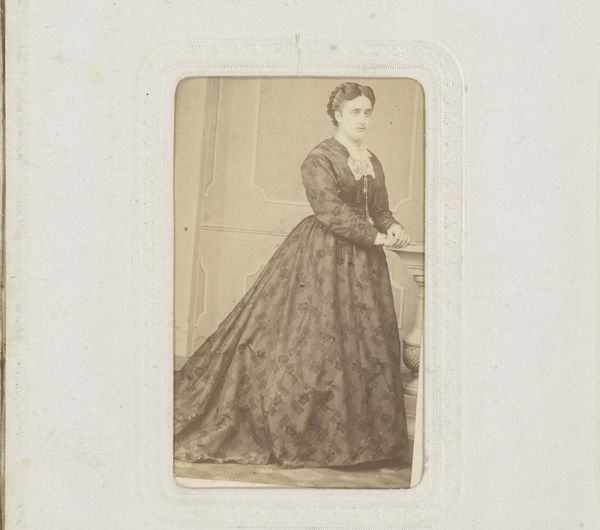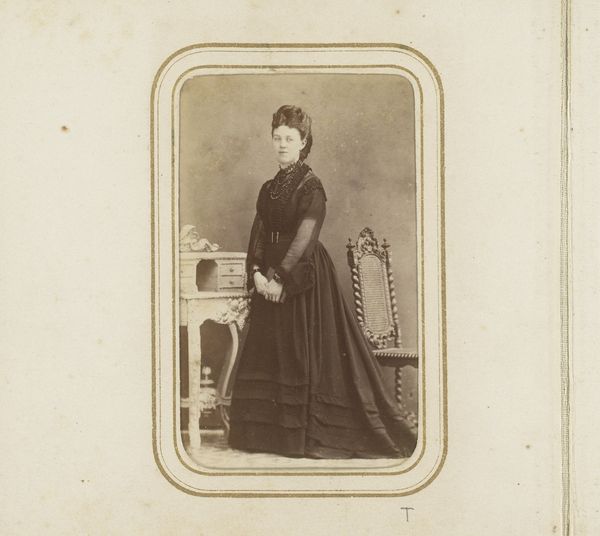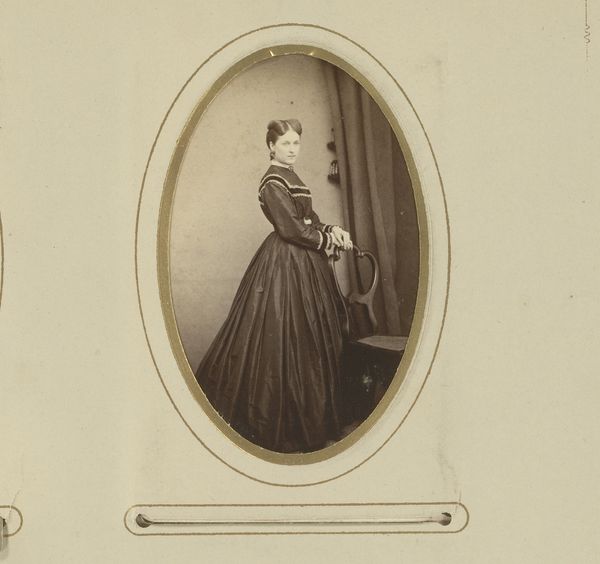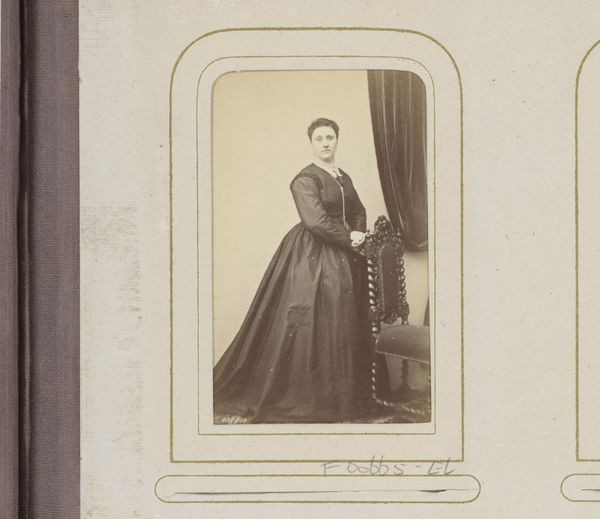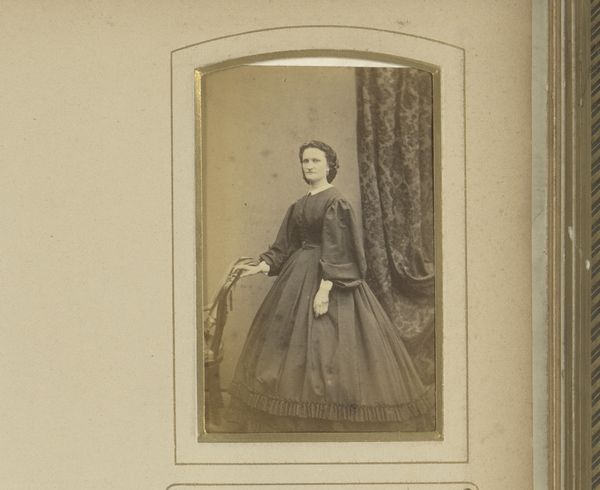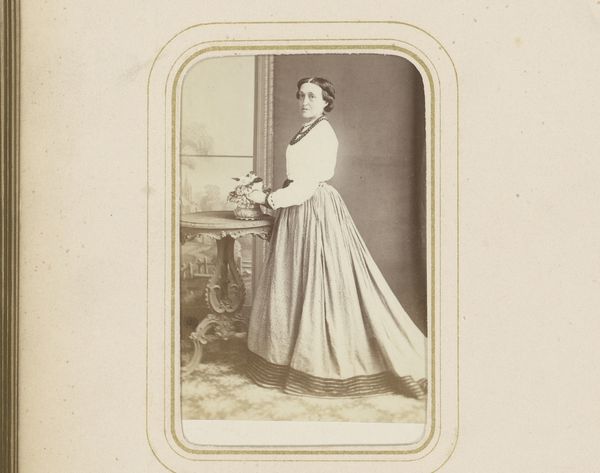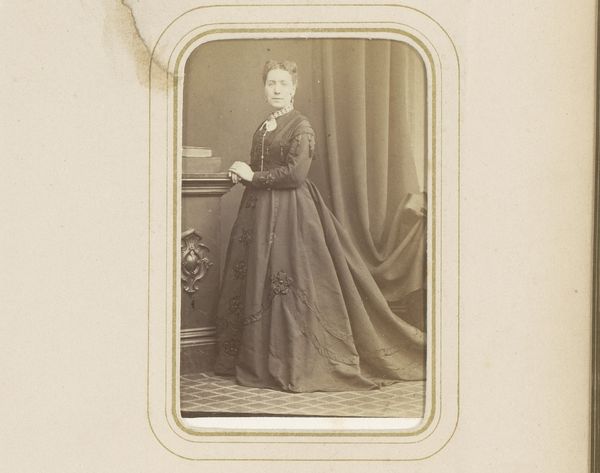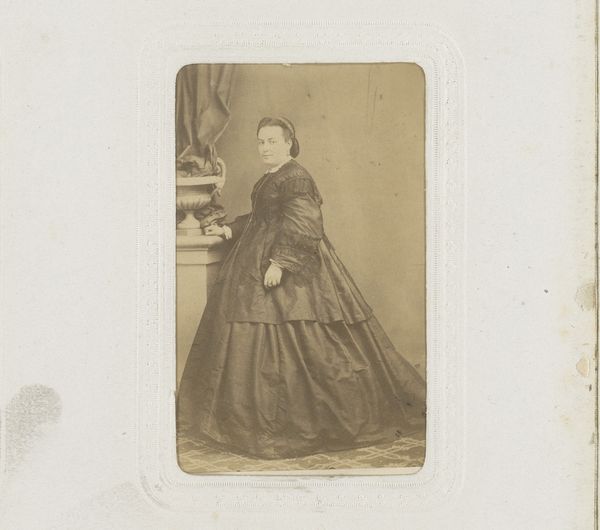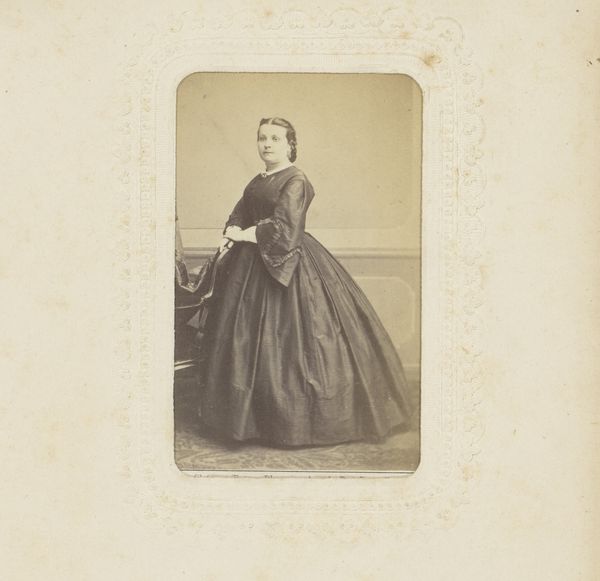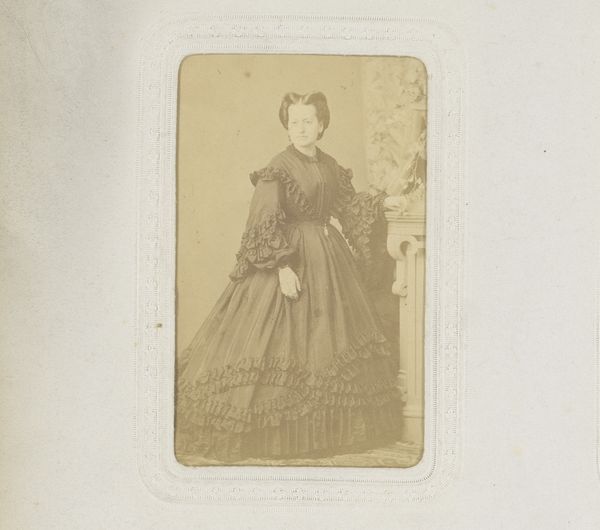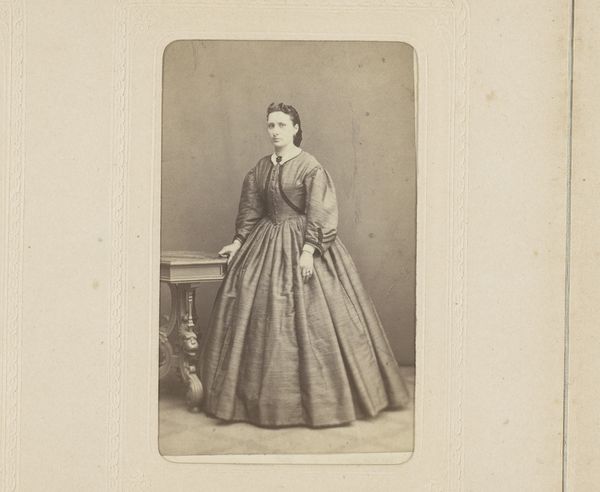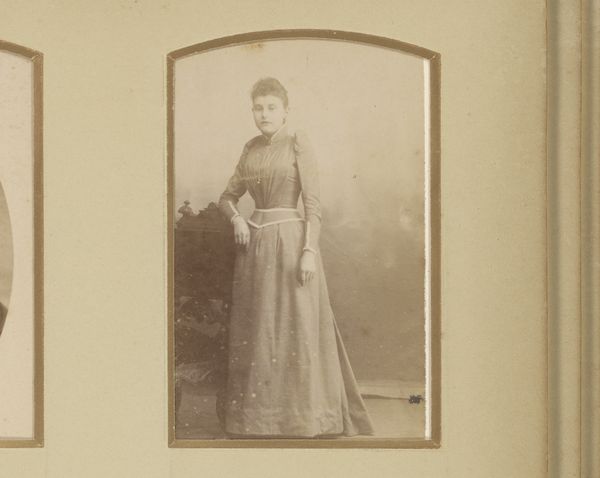
Dimensions: height 86 mm, width 52 mm
Copyright: Rijks Museum: Open Domain
Curator: Let's explore this photograph entitled "Portret van een staande vrouw," or "Portrait of a Standing Woman," attributed to Eusebio Juliá. It's a gelatin silver print likely created between 1867 and 1895. Editor: There's an interesting stillness. The way she leans against that ornate table... she looks rather world-weary, doesn’t she? Curator: Absolutely. Consider how prevalent such photographic portraits were in that era. This woman is not merely posing; she is carefully presenting herself within the accepted visual language of the time, almost like an icon. The details in her dress, her jewelry, even the objects surrounding her all speak volumes. Editor: And yet, who was she? What was her story? It strikes me that her dress looks severe, almost masculine, despite the romantic era style. The long flowing skirt clashes slightly with her composed and self-possessed air. She projects authority but with that touch of weariness. Was this the reality of women pushing against societal constraint? Curator: That's insightful. The objects are there to reinforce status – but what about her subtle expression? Photography was, in some ways, about capturing reality – or, perhaps more accurately, a curated performance of reality. Do the symbols intentionally highlight, or even subtly critique, the performance she has to put on? Look at that watch hanging from her waist... a powerful message about controlling one's own time. Editor: Control... perhaps a loss of it. Look at how the picture is framed within what appears to be a delicate ornate paper card; maybe her agency is diminished here by beauty expectations in romanticism that demand compliance to maintain status and place? Curator: I agree that it’s worth pondering the cultural codes at play. This gelatin silver print becomes a rich historical text once we begin to decode the elements present. Her gaze almost suggests a knowledge we are not privy to. Editor: It’s a wonderful reminder of the importance of looking closely, of resisting simple readings, and of engaging critically with the images we inherit. Curator: Precisely. The "Portrait of a Standing Woman" compels us to not merely see but to actively interpret the visual echoes of a time long past.
Comments
No comments
Be the first to comment and join the conversation on the ultimate creative platform.
